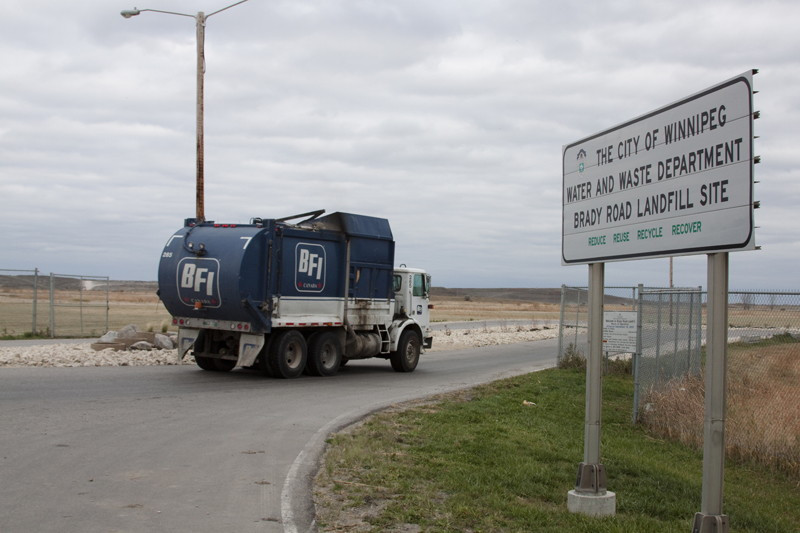Brady Road methane still to go up in smoke
Low energy costs discourage alternative energy development
The city’s garbage and recycling master plan approved earlier this month aims, in the long term, to collect organic waste separately and divert it from the landfill.
But the $2.5 million gas-collection system planned for the Brady Road Landfill won’t be running short of methane to burn any time soon.
Darryl Drohomerski, the city’s solid waste manager, said diversion would cut down on the new methane available, but the capture system will be collecting methane from waste up to 20 years old.
“Stuff in the landfill decomposes over decades. So even if we put a full ban on carbon products into the landfill now, that landfill would be continuing to emit greenhouse gasses for a long time,” said Josh Brandon of the Green Action Centre.
Drohomerski said the city would prefer to find a use for the methane, but had to go with the plan to burn it for now because regulations require them to reduce emissions from the landfill by spring of next year.
Methane is 21 times more potent as a greenhouse gas than carbon dioxide, he said.
St. Boniface councillor Dan Vandal, who voted against a related motion last year, said he has nothing against the methane-burning plan. What he objected to, he said, was the decision to let the chief administrative officer decide on the final contract without bringing it back before council.
Drohomerski said one challenge to finding a way to use the gas is that hydroelectricity in Manitoba is very cheap, so start-up costs for alternative energy seem comparatively high.
And while the University of Manitoba was considering using methane for heating, the price of natural gas went way down. Now, it would take much longer to recoup costs for building a pipeline than it might have three years ago, Drohomerski said.
The city should try to attract industry to locate beside the landfill, to use the methane onsite, Brandon said.
“That would solve a lot of the problems,” he said. “There are so many resources that are being wasted in our landfills. There’s the methane, but also the recyclable products, and the composting. We need an overall shift in our paradigm, where we don’t think of waste, but we think of resources.”
Drohomerski said the best industrial use would be something like a cement plant, because it could use the methane year-round, whereas the U of M wouldn’t require heating in the summer.
The only problem is that nobody is planning to build a cement plant in Manitoba.
“If you can find the right industry that’s willing to locate there we’d be all for it, but there hasn’t been anyone,” he said.
However, building the wells for flaring will give any interested industry a much better idea of how much gas is available, Drohomerski said.
“Probably we’d get more interest then, than trying to make a decision without all of that information now,” he said.
“It would be a shame for an industry to move beside Brady with the expectation that there’s X amount of gigajoules of gas available and then find out you’re 30 per cent under. Now they have to go and buy extra gas somewhere else or do a different system.”
Published in Volume 66, Number 7 of The Uniter (October 12, 2011)







